It is 410km south of the main island of Okinawa and takes about an hour by plane.
Ishigaki Island is located in the Yaeyama Islands, the southernmost islands in Japan.
We will introduce a map of Ishigaki Island and the surrounding islands, as well as the climate and transportation options on the island.
Ishigaki Island Map
Ishigaki Island, the gateway to the Yaeyama Islands, is a naturally rich island surrounded by coral reefs and mountain ranges.
The city is compactly located on the southern side of the island, and there are also sugarcane fields, pineapple orchards, and ranches where cows live leisurely.
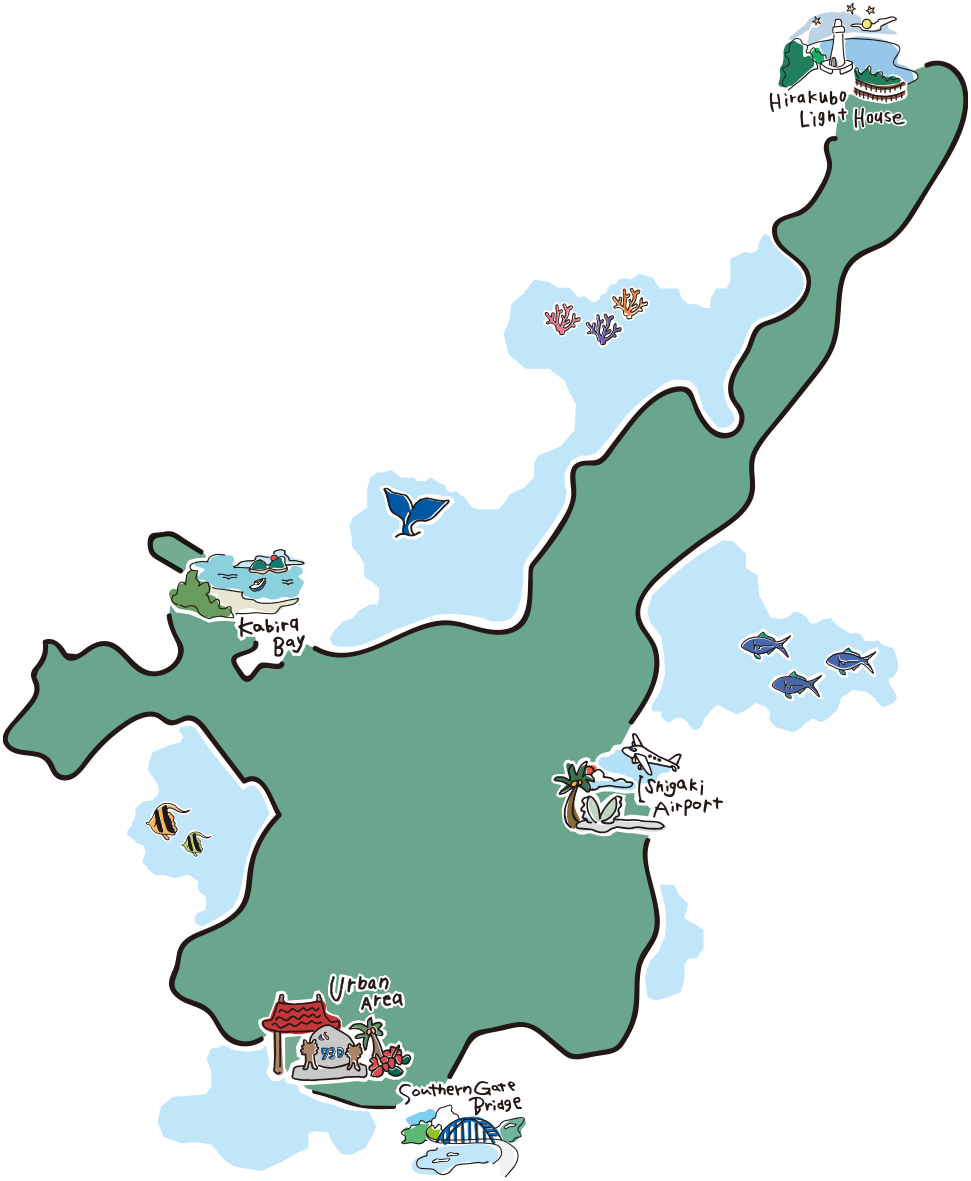
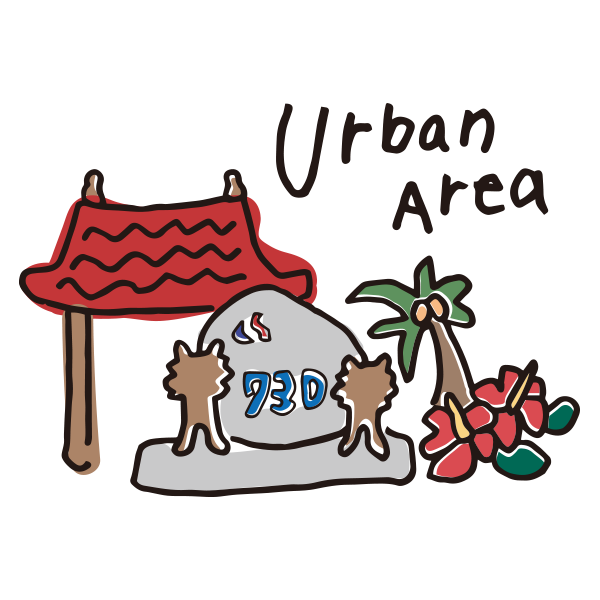
The town, which is home to many restaurants and souvenir shops, faces the sea on the south side of the island. The terminal for boats to the outlying islands is also located right next to the town.

Kabira Bay is the island's most famous scenic spot, and is a must-see for first-time visitors to Ishigaki Island.

The northernmost point of the island with a lighthouse. The unobstructed panoramic view of the ocean is beautiful.
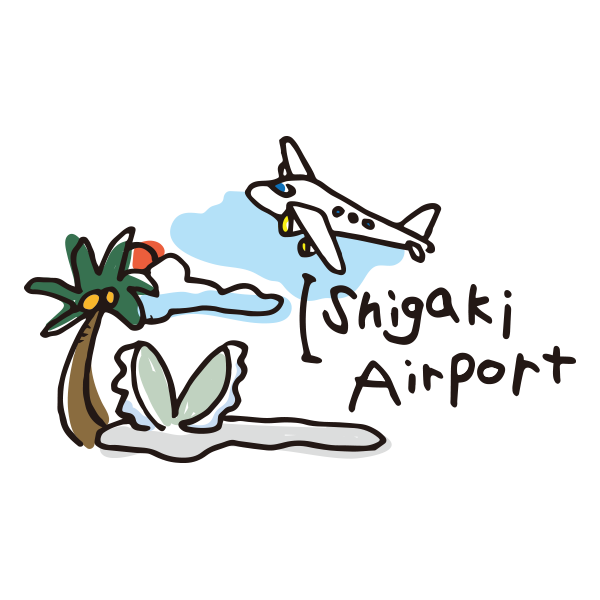
Painushima Ishigaki Airport is the gateway to the Yaeyama Islands. The current airport is a new one that opened in 2013. It is about a 30-minute drive from the city center.
Yaeyama Map
There are many unique islands around Ishigaki Island. Ferries to the nearby islands depart from the Euglena Ishigaki Island Remote Island Terminal on the south side of the city.
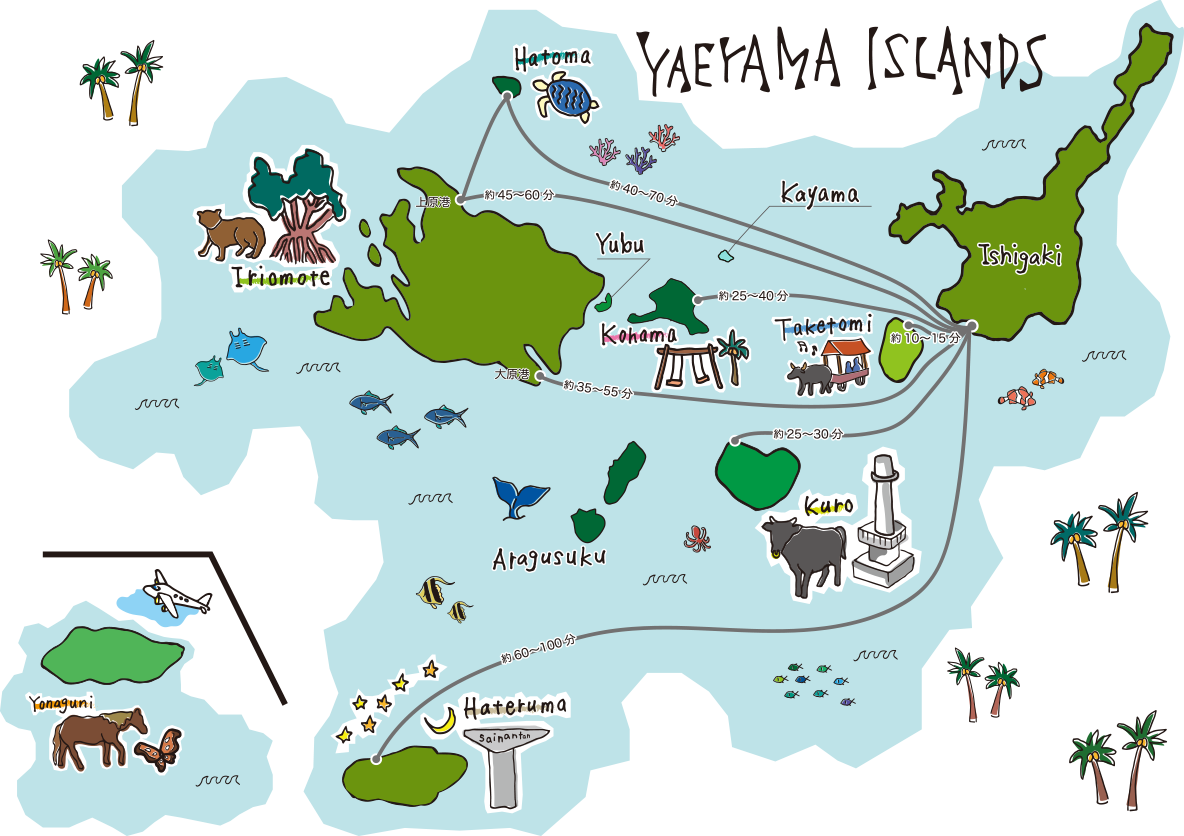
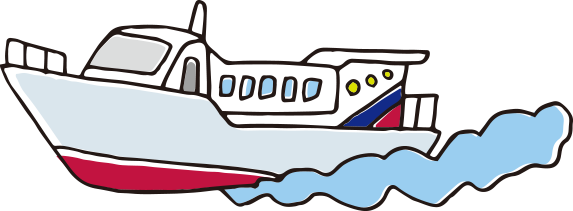
Check the shipping company's website for departure schedules!
Anei Tourism
Yaeyama Sightseeing Ferry
For more information about the remote island terminal, click here!
Ishigaki Island's climate and typhoons
Ishigaki Island has a subtropical oceanic climate and enjoys a warm climate throughout the year.
Typhoon season runs from around May to November. Although there are many sunny days in the summer, there are also many sudden, short rain showers.
The weather is often gloomy from December to March in winter. The sea breeze is strong in winter, and the temperature feels a little lower than the actual temperature.
*Temperatures are from 2020 data from the Japan Meteorological Agency. The number of typhoons that came within 300km of Ishigakijima Meteorological Observatory is the average number from 2011 to 2020.

*Temperatures are from 2020 data from the Japan Meteorological Agency. The number of typhoons that came within 300km of Ishigakijima Meteorological Observatory is the average number from 2011 to 2020.
The outfit looks like this
Spring (March to May)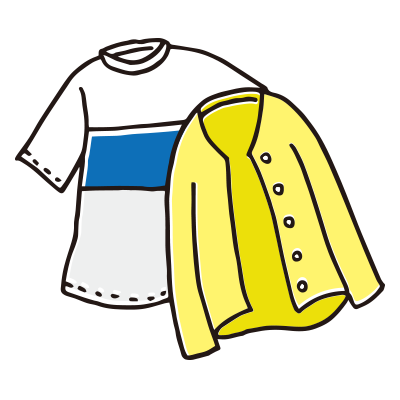 |
Although it's getting warmer, the north wind can make it cold on some days, so it's a good idea to wear long sleeves. From around May onwards, the temperature will rise to around 30°C. May is the rainy season, but it's not the drizzly rainy season that you see on the mainland, and there are also sunny days. |
|---|---|
Summer (June to August) |
Temperatures continue to exceed 30°C every day. Air conditioners are on indoors and UV rays are very strong, so it's a good idea to bring a jacket. Don't forget your hat and sunglasses. There are sudden rain showers, like squalls. |
Autumn (September to November) |
It's hot during the day, but from around October it gets chilly in the mornings and evenings, so you'll need long sleeves. Until early November, daytime temperatures reach 30°C, so you can swim in the sea or pool. |
Winter (December to February) |
It gets colder suddenly in December. The sea breeze is strong, and the temperature feels a little lower than the actual temperature, so you'll need to wear thick layers like a jacket or a light coat. However, it can get hot on sunny days, so it's best to be prepared to take off your clothes at any time. |
How to get to Ishigaki Island
Currently, Ishigaki Island can only be reached by air, with direct flights available from major cities.
It is also easy to transfer at Naha, and it takes about an hour to get to Ishigaki Airport on JAL or ANA flights.
Painushima Ishigakijima is located along the east coast of the island, and the views during takeoff and landing are spectacular.

From Haneda Airport
Direct flights on JAL and ANA take approximately 3 hours and 10 minutes
From Narita Airport
Approximately 4 hours by direct flight with Peach Aviation
From Kansai International Airport
Approximately 2 hours and 25 minutes on a direct flight with JAL or ANA
Approximately 2 hours and 45 minutes by direct flight with Peach Aviation
From Nagoya Airport and Fukuoka Airport
Direct flights available depending on the season
Learn more about the airport here!
Traveling around the island
Car rental
There are many rental car companies, and if you want to travel around the island efficiently, we recommend renting a car.
taxi
Taxis are conveniently available at airports, remote island terminals, downtown areas, and large hotels. There are also taxi companies that offer one-day sightseeing tours.
Local bus
Buses run between the airport and the city center about every 20 to 30 minutes, but please note that there are fewer buses on other routes. There is an Azuma Transportation bus terminal near the Euglena Remote Island Terminal in the city center.
Bicycle rental
A bicycle is sufficient for getting around the compact city. There are bicycle rental shops, as well as hotels and guesthouses that rent out bicycles.
Rental bikes
Rental bikes are more maneuverable than cars and allow for more active transportation. Some are for single riders, while others can accommodate two people.
Electric kick scooter
Electric kick scooters have emerged as a new means of transportation, and can be driven by anyone with a moped license or higher.
Click here for more information on getting around the island!
Important points to note when visiting Ishigaki Island
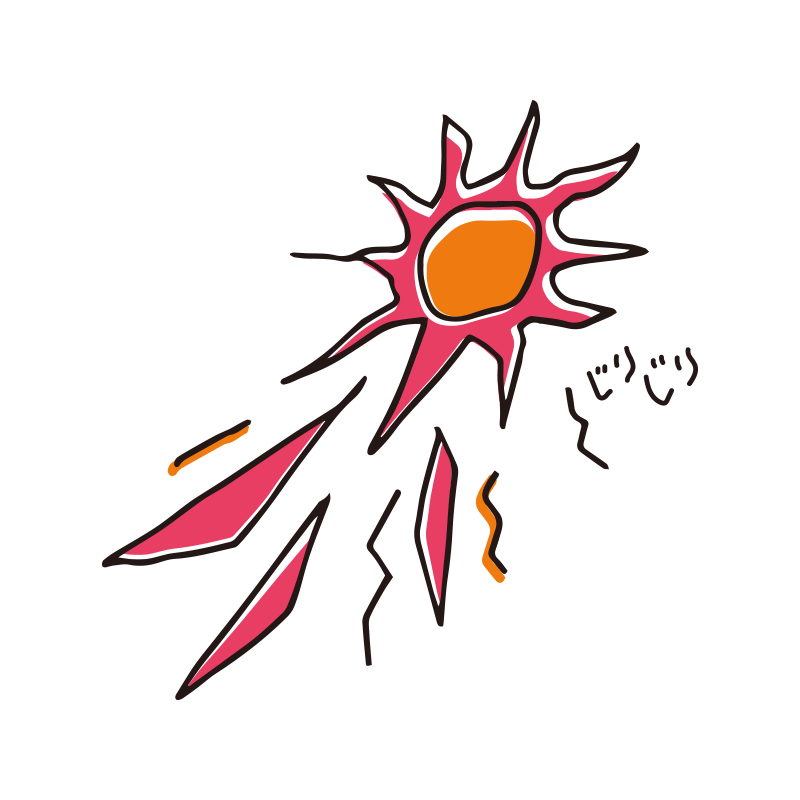
The sunlight is very strongTherefore, please take proper precautions against UV rays, such as wearing a hat, jacket, and sunglasses.

While driving on the road,Wildlife pops outPlease be careful not to drive too fast, as white-breasted waterhens are particularly likely to jump out into the water.

When a typhoon approaches,Do not go outside when a storm warning is issuedLet's wait for the typhoon to pass.
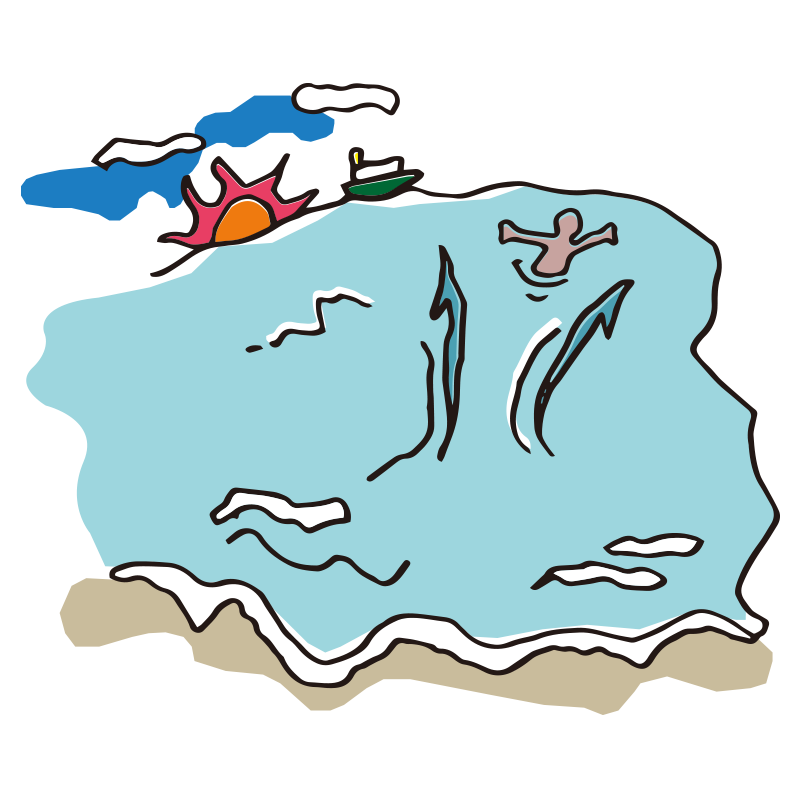
Do not swim alone in the ocean without a lifeguard or lifeguard present.Even if you are a confident swimmer, always swim with someone.
The waters of Ishigaki IslandThere are many places where rip currents occur.Strong currents have been observed especially at Yonehara Beach and Yoshiwara Beach. If you feel like you are being swept out to sea, swim parallel to the beach, and once you no longer feel the current blowing out to sea, head towards the shore.
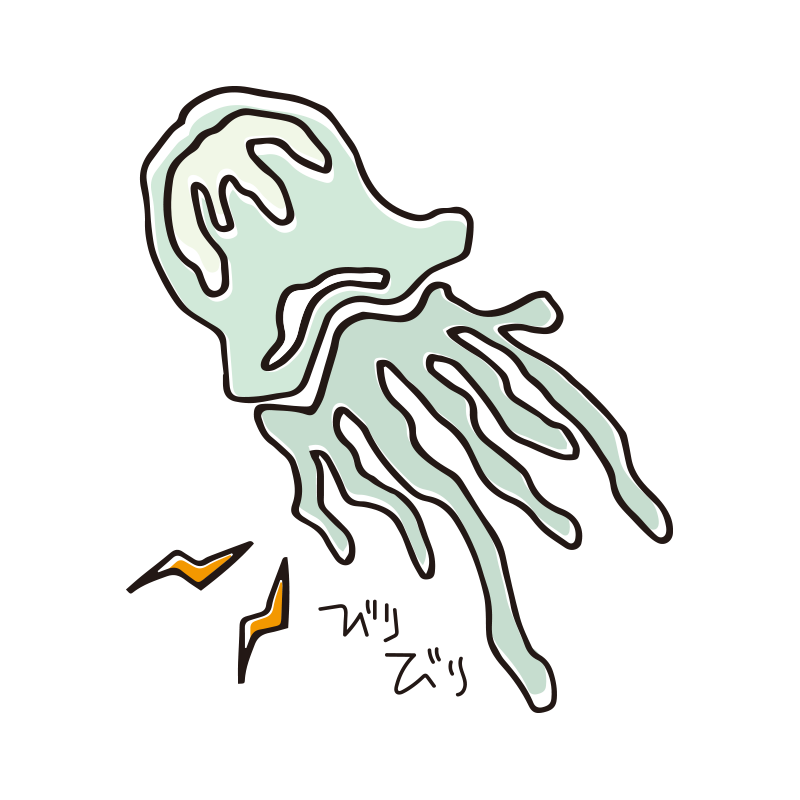
From May to October,Highly poisonous box jellyfish and Portuguese man-of-war appearWhen swimming, please go to a beach that has a jellyfish prevention net. There are also other dangerous creatures, such as crown-of-thorns starfish and lionfish, that can cause inflammation and pain when touched. For more information on dangerous marine creatures, please seeHere.
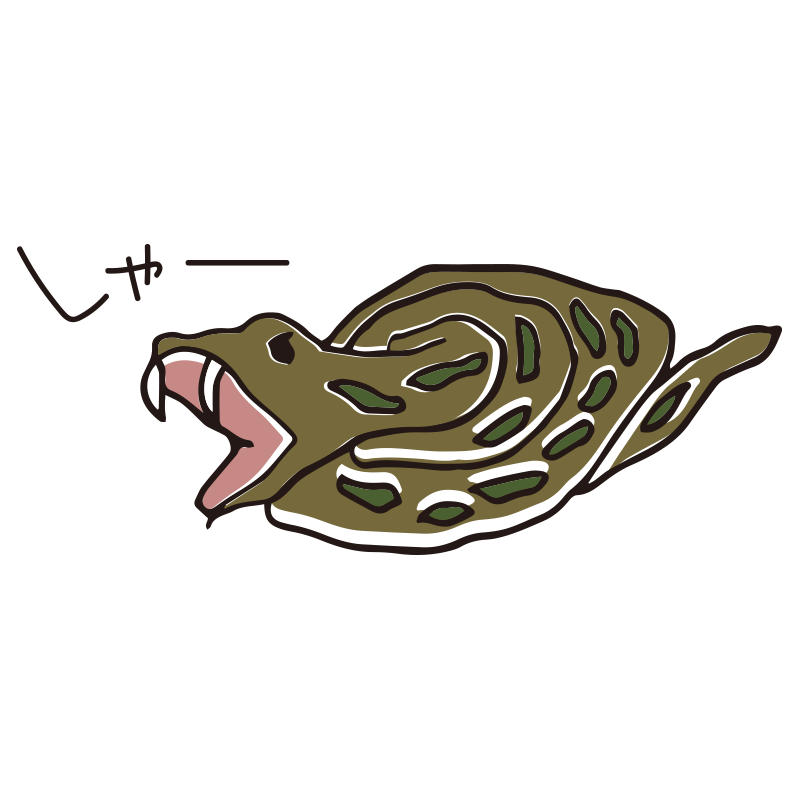
In nature,Beware of poisonous Habu snakesIn rare cases, they may be found on stone walls of private homes. If you are bitten, call for help and go to the hospital immediately.
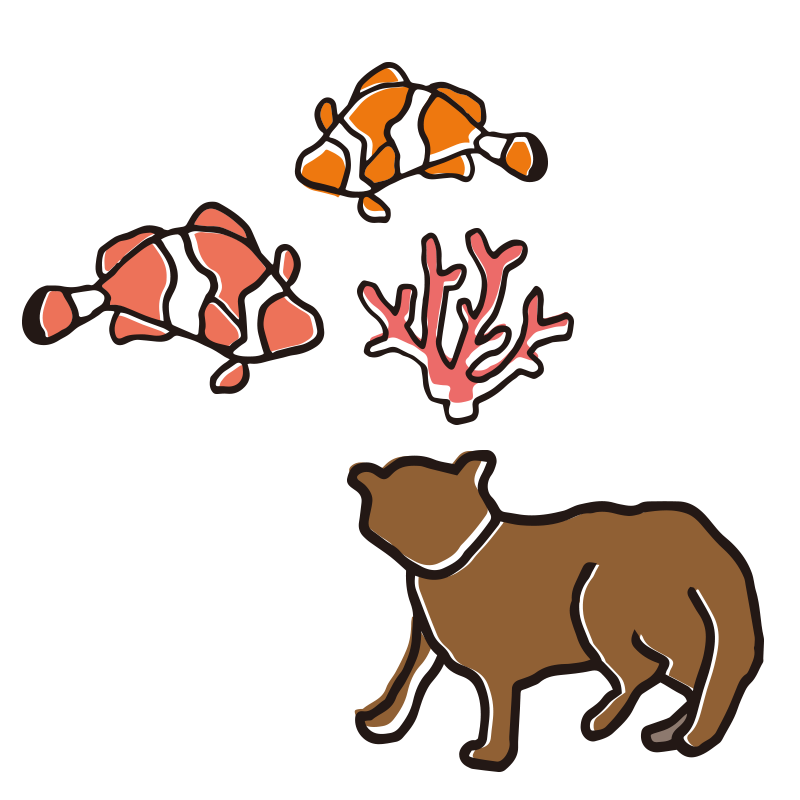
Collecting or taking out any plants or animals is prohibited.

Located in various places on the islandOntake is a sacred placePlease do not enter without permission.

